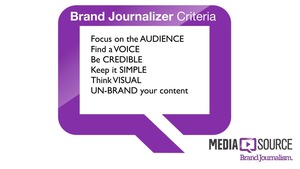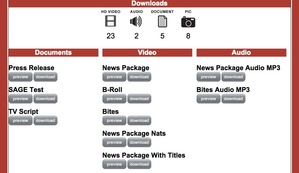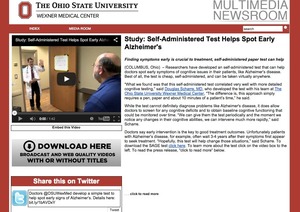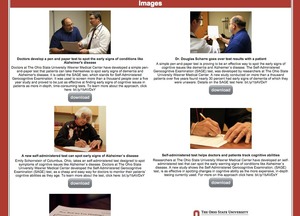Insights from a Former TV Anchor: Why Health Care Marketers Should Embrace Brand Journalism
// By Lisa Arledge Powell //
As a former TV reporter, I have had a unique chance to see multiple organizations and topics competing for media coverage in a crowded market. But in the past few years, the growth of new media has opened up many more avenues for publicity and the process of how to get your stories picked up has changed. The result is a new set of rules—and a wealth of new opportunities in a cutting-edge tactic called “brand journalism”—for health care organizations looking to promote their great work.
The Changing World
 Consider this: Just a few years ago, marketing and journalism stood about as far apart as you could be on the communications spectrum. But in today’s world, they are moving closer together. This is the brand-as-publisher age. No other industry is set up to succeed in this climate better than health care.
Consider this: Just a few years ago, marketing and journalism stood about as far apart as you could be on the communications spectrum. But in today’s world, they are moving closer together. This is the brand-as-publisher age. No other industry is set up to succeed in this climate better than health care.
Why? Because brand journalism, defined as discovering and creating news content on behalf of a brand, is based on good storytelling. In health care, we have all the elements of a captivating story at our fingertips, including cutting-edge discoveries, compelling patients, and the promise of hope.
The next time you write a story to promote the great work your organization is doing, consider skipping the CEO as your source and using a patient, doctor, or other local spokesperson instead. This is part of a growing trend called brand journalism (defined as discovering and creating news content on behalf of a brand) that is helping health care organizations create and report on their own news and trends.
Putting the Spin on Your Efforts
Brand journalism turns the traditional marketing and public relations model on its head. Instead of teasing the news media with stories from your health care organization in a press release and hoping that a journalist deems the information newsworthy, brand journalism allows companies to report on their own stories.
Brand journalism is the opposite of a TV commercial or a marketing brochure. It’s telling without selling. Successful brand journalism content looks and feels journalistic. Therefore, the less branded the content, the more likely it is effective brand journalism.
The Nuts and Bolts of Creating Brand Journalism Content
 Brand journalism is nothing without a good story. But every health story may not suitable for brand journalism. The problem-solution story model works best for health care brand journalism. This format makes the issue easy to understand and positions your organization as a problem solver.
Brand journalism is nothing without a good story. But every health story may not suitable for brand journalism. The problem-solution story model works best for health care brand journalism. This format makes the issue easy to understand and positions your organization as a problem solver.
While there are no industry standards or guidelines for brand journalism content, my content-focused health care public relations firm, MediaSource, developed the Brand Journalizer Criteria to help health care marketers evaluate topics for brand journalism content.
Communicators can use these criteria as a lens to review potential story topics. If the topic meets all the key points, then the story has a good chance of not only resonating with your target audience on your company-owned channels, it also has a chance of being picked up by the news media. This combination of earned and owned media saturation is where brand journalism can really make an impact.
Here are some key points to consider as you travel down the brand journalism road:
- Focus on the audience.
The first step is to focus on the audience, instead of your health care brand or CEO. Evaluate stories by considering what your target audience cares about and how they will benefit. Quality brand journalism is not about your health care institution. It is about your audience.
- Find a voice.
The next step is to find a voice by featuring a real person to help tell the story. This is sometimes the “hero” element in a brand journalism story. In health care settings, the voice is typically the patient or person directly affected by the story. Make sure this person is someone to whom your target audience can relate. Remember that the real person featured in a brand journalism story is seldom your company spokesperson or top executive.
- Be credible.
Health care institutions already have high credibility. But sometimes brand journalism stories need to tie into something bigger than your brand to be relevant. Seek tie-ins to your content such as national statistics or new trends. Third-party statistics from well-respected health care organizations can often help boost the newsworthiness of your story.
- Keep it simple.
Since most health care brand journalism is targeted to the health care consumer, keep your message simple. While commentary from doctors and medical experts adds credibility to health care brand journalism content, it’s your job as a brand journalist to simplify it. Remember that doctors use big words but regular people don’t. Remind the physician that the target audience is the consumer and provide them with bullet points that explain their research or treatment in simple terms.
- Think visual.
In today’s forever-scrolling world, images catch the user’s eye. This is why brand journalists need to focus on compelling visuals such as photos, videos, and infographics. Part of your brand journalism efforts should include creating quality multimedia elements. Before you gather any content for a story, identify the iconic images you want to capture.
- Un-brand your content.
The final idea, un-brand your content, understandably can make the C-suite nervous. Your CFO might ask why the company would finance a campaign that doesn’t include branding from the health care organization. But by un-branding, we mean removing all branding except those elements that seamlessly fit with editorial-style content. In brand journalism, a tactic to un-brand your content is to mention your company through the affiliation of your medical expert who is featured in the story. If your institution releases new research, you can seamlessly include your brand name and affiliation when the story mentions the research findings.
How to Distribute Your Brand Journalism Content
Once you’ve created brand journalism content, it should be distributed to your target audience. This style of content delivers maximum value when it’s leveraged across both earned and company-owned media channels. Paid media can also be used if earned and owned media efforts don’t deliver the desired value.
- Brand journalism for company-owned media:
Best practices for brand journalism content include distributing it across company-owned media channels, which may include a special area of the health care institution’s website, as is the case with Cleveland Clinic’s Health Essentials or via a separate website and URL, which is how Advocate Health Care’s health enews is distributed to consumers. These sites look similar to a news media site, giving the content the feel of being produced by a journalistic media outlet rather than by the company itself. Health care brands should also amplify this type of content across their social media channels, including Facebook, Twitter, Instagram, Pinterest, and any other channels that reach your target audience. With new advancements in Facebook video, marketers can distribute their brand journalism video natively to Facebook, directly reaching users of this powerful social network.
- Brand journalism for earned (news) media:
Brand journalism done at its highest level can and should be used to garner earned (news) media coverage, which is a common goal of health care CMOs working to garner national exposure. The general rules for pushing the content to earned media follow the same principles used in traditional marketing.Distributing brand journalism content starts with correctly targeting and identifying the appropriate journalists, followed by building relationships and sharing the story. The health care content provider’s attitude should be less “health story pitching” and more “health content sharing.” A successful brand journalism content provider will be viewed by journalists as a valuable content source instead of as a pesky marketing person.Brand journalism content should be delivered using distribution methods that make it easy for journalists to use. Tools such as the Mayo Clinic News Network and The Ohio State University Wexner Medical Center’s Multimedia Newsroom were built with the goal of offering easy ways for journalists to download and use brand journalism content.
How One Hospital Successfully Uses Brand Journalism: The Ohio State University Wexner Medical Center SAGE Test
Researchers at The Ohio State University Wexner Medical Center developed a self-administered test called the SAGE test that can help spot early symptoms of cognitive issues such as Alzheimer’s disease.
They wanted to use a brand journalism approach to raise national awareness about the availability of the test and to make it easily accessible for people to use.
The hospital’s goal for this national campaign was to use brand journalism for earned media to drive consumers to company-owned media. They wanted to start the buzz with high-quality and high-volume news media coverage that would send consumers to the medical center’s website to download the SAGE test.
The strategy was to use the marketing approach of brand journalism to amplify the message. A key tactic was to produce journalism-style content that could be used for a variety of media channels. These multimedia stories would help humanize this issue and more fully motivate potential customers to download the SAGE test.
Operating in a newsroom-style environment, hospital marketers identified the key journalistic elements, including a patient who had taken the test to feature in the story. Once the content was produced, it was made available to the news media on a multimedia newsroom. Company-owned media elements were prepared to be pushed out via social media channels. The company’s Web team designed an area on the hospital’s website to host the downloadable SAGE test, which is where all news media and company-owned media would push consumers. The media relations team targeted key news outlets and pitched the story to journalists.
 This brand journalism campaign was the most successful individual brand journalism initiative to date for The Ohio State University Wexner Medical Center, with more than 1 million downloads of the SAGE test from the Center’s website. The brand journalism coverage helped drive so many downloads that the traffic caused the hospital’s website to crash for a short time.
This brand journalism campaign was the most successful individual brand journalism initiative to date for The Ohio State University Wexner Medical Center, with more than 1 million downloads of the SAGE test from the Center’s website. The brand journalism coverage helped drive so many downloads that the traffic caused the hospital’s website to crash for a short time.
The hospital’s multimedia story was featured by top-tier media outlets across the world, including NBC Nightly News, FOX Business Network, Huffington Post, and Forbes Online. The earned media coverage has reached a total audience of more than 666 million viewers, readers, and listeners, with an advertising value of more than $1.8 million to date.
Other health care communicators can follow Wexner’s example. Now is the perfect time to learn the skills to become brand journalists, with the goal of identifying and creating stories that appeal to their target audience and move the needle of their brand.
Lisa Arledge Powell is President of MediaSource, a content-focused health care public relations firm. A former television news reporter, Lisa specializes in brand journalism and works with the nation’s top hospitals and brands to get their message to target audiences. Follow her on Twitter: @LisaArledge.


